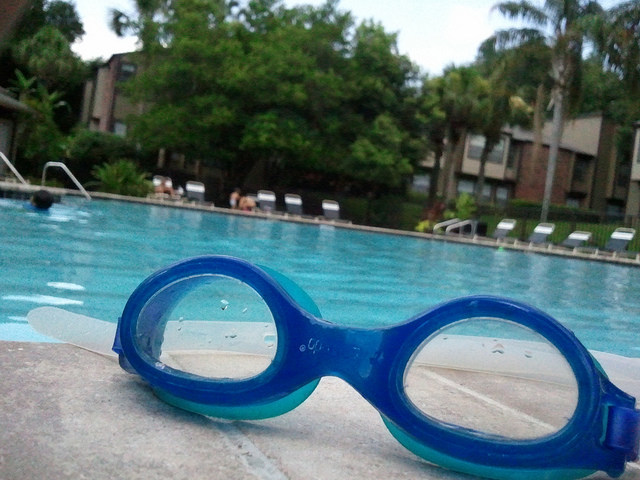Healing Powers: A Guide to Using the Therapeutic Effects of Swimming to Alleviate Symptoms of Depression
Category : Uncategorized
Table of Contents
Overview
Signs You May Be Depressed
Swimming and Its Mental Health Boost
The How to Get Started Checklist
Therapeutic Swimming Activities
Anyone who has struggled with depression or watched a family member or friend deal with the disease knows just how debilitating it can be. Its symptoms can be all-consuming and make it difficult to perform even simple tasks, such as getting out of bed.
Unfortunately, the effects of depression are widespread. In fact, a recent Ozy.com article revealed that 1 in 10 Americans suffer from the illness. The article also suggests a culprit for our growing mental health problems–our unhealthy, sleep-deprived, lonely modern lifestyles.
Implementing a way of life that focuses on health and wellness can be helpful in alleviating the symptoms of depression. For those struggling with the disease, exercise has been proven to be especially helpful.
As WebMD.com explains, when we exercise the body releases endorphins, a sort of natural anti-depressant, which makes us feel more positive and less pain. While any kind of exercise will spark this effect, not everyone is able to run, bike, or perform other land exercises. And that’s why swimming is such a wonderful option.
Due to aches, pains, age, or disabilities, some people may have difficulty going for a jog, but water’s natural buoyancy makes swimming an excellent alternative. And its effects are two-fold. The physical activity is a great head-to-toe workout, and it has been shown to have positive effects on mental health. In fact, Swimming.org notes that women experience “significantly less tension, depression, and anger” after taking a dip.
This guide provides resources about depression and why swimming serves as a therapeutic option for helping to treat the disease:
According to the World Health Organization, depression is “the leading cause of disability worldwide.” If you think you may be depressed, Prevention.com offers a quiz to help you assess your feelings. Read on to learn more about the common signs of the illness.
Inability to sleep or sleeping too much. Difficulties with sleep often plague people suffering from the disease. Some may feel the need to sleep more often than they normally would. While, according to the National Sleep Foundation, insomnia is also widely common in depressed people, and in fact, people with insomnia are 10 times more likely to develop depression.
Via Flickr – by Can Mustafa Ozdemir
Excessive drinking. If you’re drinking more than you used to, you may be trying to self-medicate. As WebMD.com explains, not only can drinking alcohol contribute to your depression, it may also influence you to make other damaging decisions that could cause you to lose your job, harm a relationship, or negatively affect another aspect of your life.
Feelings of hopelessness and helplessness. These feelings are very common among people who show signs of depression. As AllAboutDepression.com notes, they can be especially damaging because they severely effect how a person views their future.
Frequent mood swings. As Healthline.com notes, difficulty controlling angry or irritated feelings is especially common in men who are experiencing depression.
Sudden changes in weight. Sufferers know that this disease can affect every aspect of your life, including what you eat. As WebMD.com notes, for some people, depression might lead to a loss of appetite while others may use food as a source of comfort. The article stresses the importance of “tuning into your hunger” and eating a nutritious diet.
Loss of interest in regular activities. AllAboutDepression.com explains that withdrawing from family and friends is a common side effect. Part of that withdrawal results from the person no longer wanting to take part in outings and events that they used to enjoy. The article stresses the importance of trying to continue participating in these activities whenever possible.
Via Flickr – by Ryan Weisgerber
Chronic or frequent aches and pains. Sometimes this illness can manifest itself as physical pain. According to the National Institute of Mental Health, studies have shown that “people with more severe depression feel more intense pain.” One reason, notes the organization, is that the disease may cause the immune system to over produce cytokines, which can lead to inflammation.
Thoughts of suicide. Unfortunately, it isn’t uncommon for people with depression to have suicidal thoughts or intentions. If you or someone you love is expressing suicidal thoughts, don’t hesitate to call the National Suicide Prevention Line at 1-800-273-8255.
Swimming and Its Mental Health Boost
Exercise is a great addition to any treatment for depression, but swimming’s combined physical and mental benefits make it especially therapeutic. Learn more about its positive effects on mental health below:
Releases “feel-good” brain chemicals. To get the feel-good effects of exercise, Mayo Clinic recommends exercising for 30 minutes or more, 3-5 days each week.
Helps you absorb excess stress hormones. Any exercise is great for people who are depressed; however, going for a swim can have added benefits. As PsychCentral.com reports, a recent article from Swimmer Magazine noted that an intense routine can help absorb excess stress hormones, “‘converting free-floating angst into muscle relaxation.’”
Helps you meditate through repetition. Most swim routines will require that you repeat a stroke to move yourself through the pool. This repetition, as a writer at EverydayHealth.com notes, turns the activity into a form of meditation.
Via Flickr – Andris
Creates a relaxation response. When you’re depressed it can be difficult to get out of your own head and just take a moment to relax. As this HowStuffWorks.com article explains, swimming can be used to trigger a relaxation response. Your muscles are constantly “stretching and relaxing” when those actions are coupled with the rhythmic breathing that results from being in the water, you can begin to let go of the thoughts that have been plaguing you.
Reduces anxiety. As this article by a doctor from Johns Hopkins Mood Disorders Center notes, because of its level of intensity and its rhythmic nature, swimming is a useful way to relieve anxiety.
Via Flickr – by Kirt Edblom
Provides a good opportunity to socialize. Feelings of loneliness and isolation go hand in hand with depression. In this piece, Bucknell University points out that taking a dip can be a good opportunity to spend time with others, and these enjoyable moments can help ease your negative thoughts.
The How to Get Started Checklist
If you aren’t a frequent swimmer, you may need a little help navigating these new waters. Below is a checklist to help guide you through the process:
Find lessons for adults in your area. Don’t sweat it if you don’t know how to swim. Many community pools offer adult lessons. To find lessons in your area, use the locator provided by SwimLessons.com.
Find a public pool that’s open year round. In order to make getting in the pool a consistent part of treating your depression, you’ll need to be able to do it throughout the year. If you aren’t sure where the closest, year-round, publically accessible pool is in your area, try searching the Swimmers Guide database.
Via Flickr – by EvelynGiggles
Get the proper equipment. Of course, you’ll need your bathing suit, but there is other gear that will make your time in the water easier. These tips include a list of needed equipment, such as goggles, a swim cap, a towel, and more.
Learn pool etiquette. If you haven’t spent a lot of time in the pool, you may need to learn the rules so that you don’t disrupt anyone else’s workout. This article from Active.com provides several great tips for newbies. For example, if the pool is crowded, you can split the lane with another swimmer, but you should both stay on your side of the lane.
Find a workout that suits you. There are many ways to tackle making swimming a regular part of your life. If you’re new to it and aren’t sure what level of activity to start with or if you’re simply looking to challenge yourself in the pool, try one of these top 10 workouts.
Focus on your form. Frequent time in the pool may take some time to get used to. As this article from LiveStrong.com notes, making the switch from a land to a water exercise requires changes in how we hold our bodies and how we breathe. The article provides great advice on how to make your switch to swimming a success including paying attention to your form in the water.
Via Flickr – Tyler Bolken
Eat a depression-fighting diet. You’ll need to re-energize after your time in the pool. So, why not do so with foods that are known to lower stress and help alleviate symptoms of the disease? In this article, Prevention.com makes a few suggestions:
- Asparagus
- Avocados
- Berries
- Cashews
- Chamomile Tea
- Chocolate
- Garlic
- Grass-fed beef
- Green Tea
- Oatmeal
- Oranges
- Oysters
- Walnuts
Therapeutic Swimming Activities
Swimming laps is a great way to take advantage of the healing powers of being in the pool, but it may not appeal to everyone. Here are a few additional suggestions for how to get the most out of your time in the water:
Consider water aerobics. If you aren’t able or interested in doing laps, try water aerobics. MedicalDaily.com notes that you’ll still get a great workout, including a “core challenge.” And because you’re exercising, your body will still release the mental health-boosting hormones that can help alleviate your symptoms.
Jump into wild water. Don’t be afraid to venture out of the pool and into nature. As this article from The Daily Mail attests, “wild swimming” can also be very helpful for people suffering from depression.
Practice pool yoga. Get the relaxing and physical benefits from yoga by trying these water yoga poses.
Via Flickr – by Mark Mitchell
Learn to float. Sometimes simply floating on your back and focusing on your breathing can help you clear your mind and relax. If you struggle to float, eHow.com provides a six-step tutorial.
Try relaxing exercises. GoodRelaxation.com suggests four easy-to-do exercises that will help you relax. For example, try water jogging or incorporate a pool noodle into your aerobic moves.
Meditate. In this article, GaiamTV.com provides four quick tips on how to turn your pool time into a “moving meditation.”







